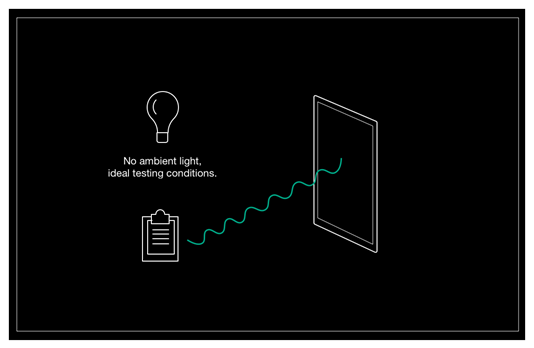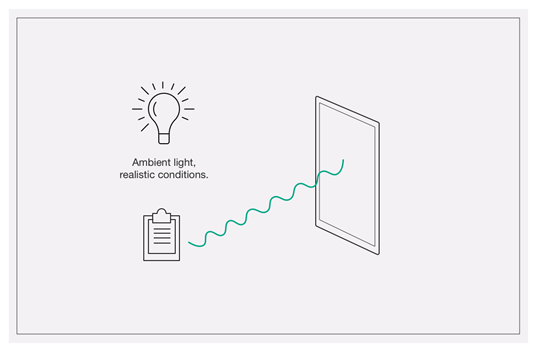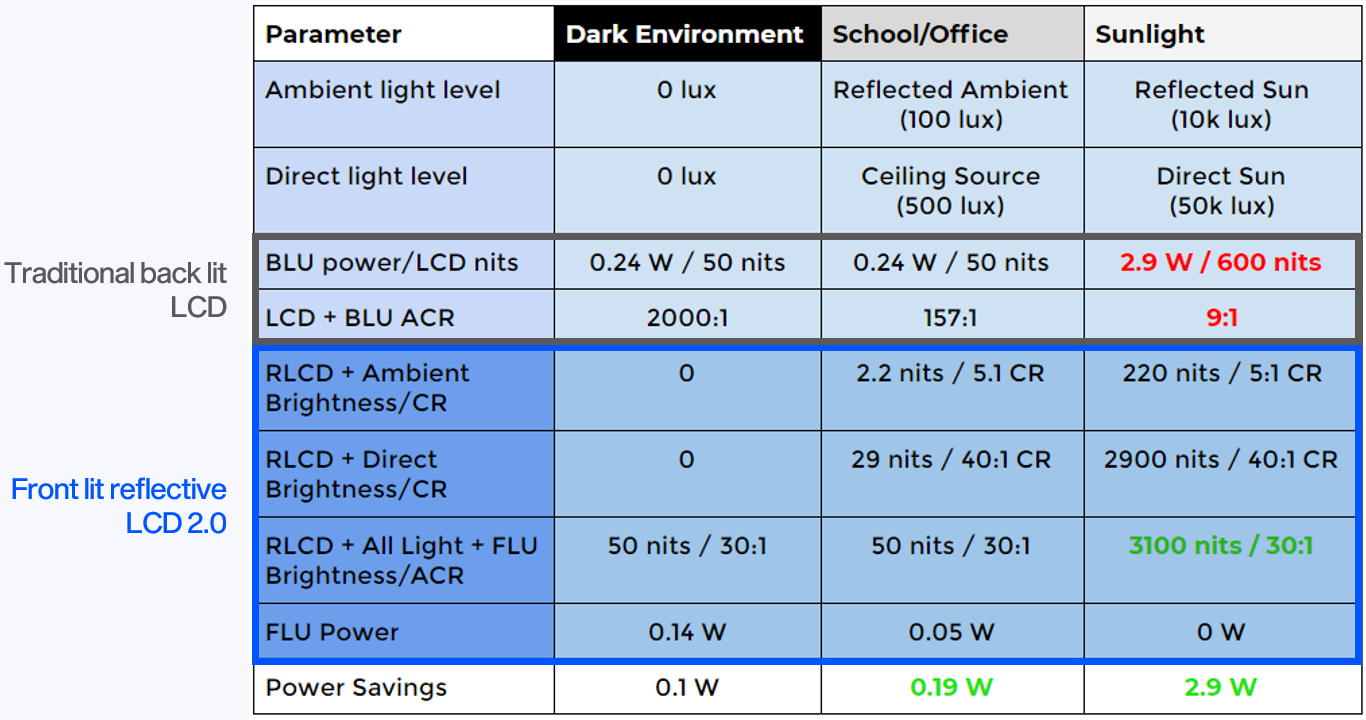by Jose Romero, Azumo’s Senior Electrical Engineer
Contrast ratio is one of the go-to measurements to define the picture quality of a consumer electronic display. In its simplest definition, contrast ratio is the relationship between the maximum and minimum light intensity that can be generated by a display (e.g. the whitest white vs the richest black). Typically, a high contrast ratio is desirable — displays with a big difference between black and white will look crisp and clear. One does need to be careful when looking at the numbers, especially when comparing across different display technologies.
The environments used for most current standard contrast measurements do not always represent the lighting conditions where we actually view our screens nowadays. The metrics were created for the home theater experience (complete darkness). In other words, they were created when we thought of screens only as large TVs, before we put them in our pocket or backpack and took them everywhere we go.
The question we rarely ask ourselves is “What is the contrast ratio we should be considering when the screen is outside?“.
A Look at Contrast Ratios
There are three usual ways contrast ratios are measured and reported as:
- Static —This is the ratio between the light intensity of white and black areas that the display can show at the same time for a given brightness setting.
- Dynamic — This is the ratio measured between the light intensity of a full screen of white vs a full screen of black. The difference seems subtle but it allows many display technologies to “game” this number as they can usually do things like dim the backlight on dark scenes or bump it up in bright ones to get impossible large numbers; you will usually find this figure in advertising materials.
- ANSI — The measurement is done with a checkerboard patterned test image where the black and white luminosity values are measured simultaneously and averaged. This is a standardized version of the Static contrast ratio discussed previously, usually used for comparing projectors.
The one thing they all have in common? These measurements are all taken in pitch black rooms. There’s no ambient lighting taken into account. So the real-life setting of most non-TV displays isn’t considered in these tests at all. What good is a metric when it’s so far from reality?
Taking Ambient Light into Account
At Azumo, we are working to solve real problems for how we actually use our devices — how can we make devices hold a charge longer and be viewable in the full range of real-world conditions? Part of that is taking ambient light into effect. When we measure contrast ratios, we make sure it’s done in all sorts of conditions, and not boiled down to engineer impressive numbers.

No ambient light represents the ideal test conditions. (Image source: Azumo)

Realistictest conditions under ambient light. (Image source: Azumo)
Contrast Ratios: Transmissive LCD vs Reflective LCDs
Assumptions:
- 10” 4:3 tablet
- 2% top AR glass reflection
- Minimum 50 nits
Transmissive LCD:
- 10% transmission
- 170% gain BLU (backlight unit) with DBEF (dual brightness enhancing film)
- 80% optically efficient light guide
Reflective LCD:
- 7% Ambient Reflective (CR 5:1)
- 18% Direct Reflective (CR 40:1)
- FLP (front light panel) at ideal illumination
- 80% optically efficient light guide

Metrics associated with Transmissive LCD with backlight (LCD + BLU) and Reflective LCD with front light (RLCD + FLU) under various lighting environments.
This chart may not be consumer-friendly, but it reveals a few things. Ambient light makes a huge difference in contrast ratio in terms of power consumption and readability. If your product is used in an environment other than complete darkness, you’ll want to also consider Ambient Contrast Ratio metrics when selecting your display.
If your product goes outside or requires a long battery life, an RLCD might be the right choice. Not every device will be used in the perfect lighting environment — most devices should be designed with flexibility in mind.
Azumoat Work
The important thing for device makers to keep in mind is that most of the metrics for display quality come from a time when we experienced our screens very differently. If you’re looking to furnish a man cave with an enormous TV, they may still apply. But for everything else, the data is meaningless, and it’s actually keeping device makers away from being able to innovate and create devices that match actual use cases.
We know we’ve only just begun thinking of all the ways we can use screens to dramatically improve the quality of medical or industrial devices that need to work outdoors and hold a charge for a longer time. We know there are more consumer applications for adventure seekers ready to come out of their caves and explore, with help from weather and GPS technologies, and tablets that are ready to travel. We’re excited by all the possibilities and have always prided ourselves on being in front of all these new discoveries. Watch a clip on ACR from our webinar, Choosing the Right Display for Your Product, on YouTube here.
Additional Resources:
The Science Behind LCD 2.0
LCD 2.0 Development Kits
What is LCD 2.0?
About the author
 Jose Romero, Sr. Electrical Engineer, Azumo
Jose Romero, Sr. Electrical Engineer, Azumo
Jose leads all electrical design and embedded firmware development at Azumo. He also provides sales engineering support to customers for electrical and programming topics. Jose has almost 8 years of experience in electronics design, prototyping, and troubleshooting.




